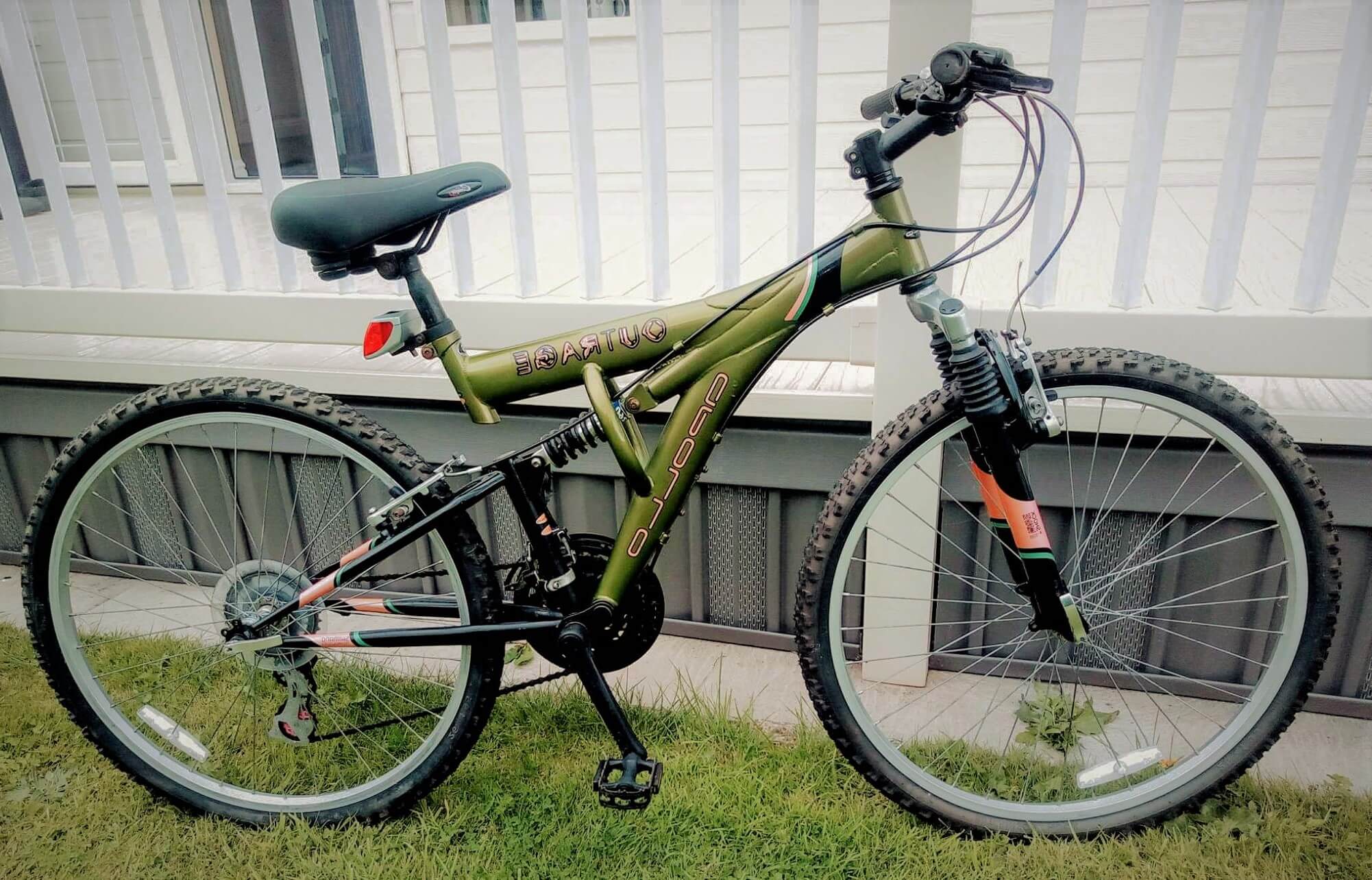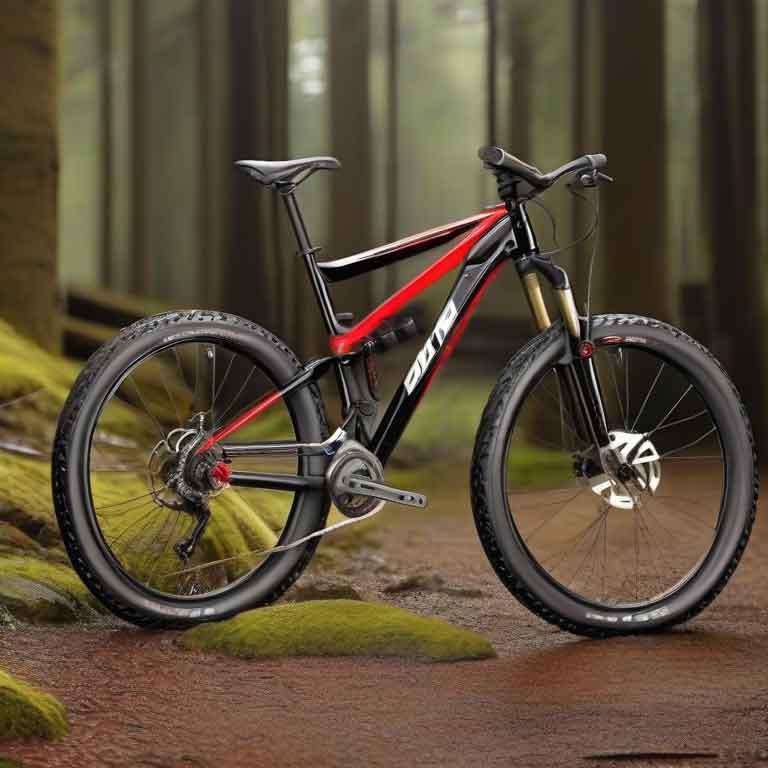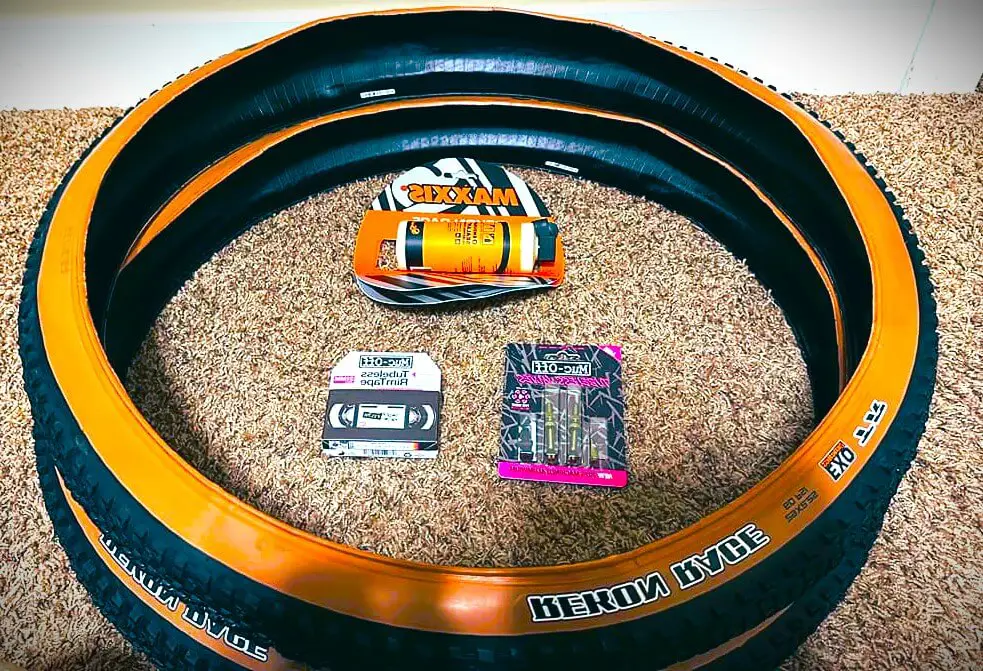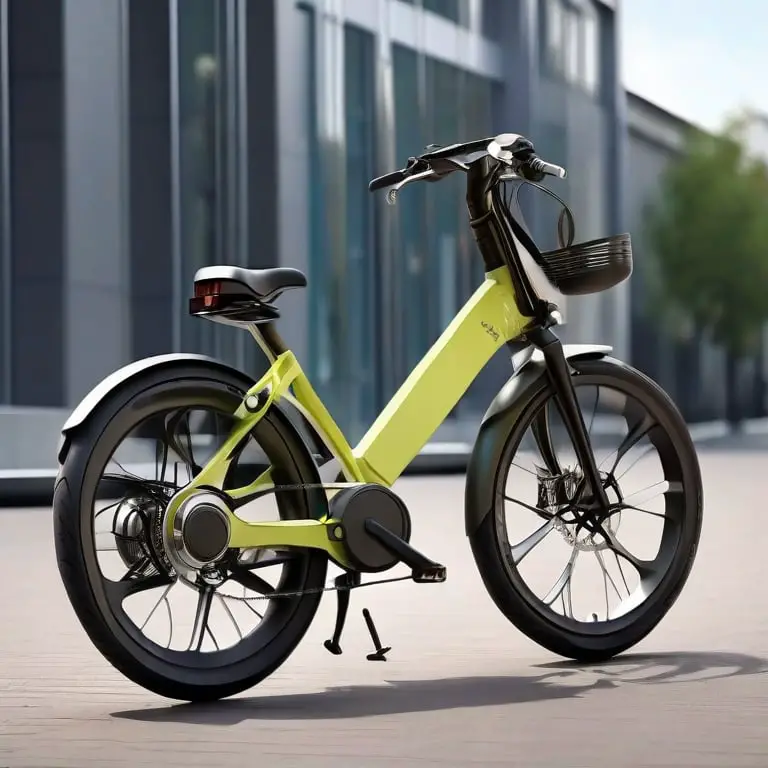Are 26 Inch Mountain Bikes Obsolete at Present? (Factual Answer)

As an affiliate, we may earn from qualifying purchases. We get commissions for purchases made through links on this website. You can read more on our Affiliate Disclaimer here.
The short answer is not quite, but 26-inch mountain bikes or, more accurately, mountain bikes with 26-inch diameter wheels, or, simply, 26ers are outdated.
We wouldn’t say they are obsolete, though a rudimentary Google search would tell you that “outdated” and “obsolete” are synonymous.
Obsolete is a term used to describe a design or concept that is no longer relevant at present, most often due to the advent of a newer technology that is so advanced and beneficial that all or almost all benefits offered by a former model can no longer compete.
A case in point is the flip phone. Nostalgic? Quite so.
But obsolete? Pretty much! Hope you get your answer to your queries that are 26-inch mountain bikes obsolete or not!
Let’s dive deep for more details…
Now, the 26-inch mountain bike is not a flip phone. It is still being produced by many companies. For example, there are Shimano 26-inch mountain bike wheels.
However, largely speaking, there are many problems with the availability and effectiveness of 26-inch mountain bikes.
We will examine those below and also cover the basics of wheel sizes, pit 26-inch mountain wheels, and tires against those of other sizes, and examine the future of 26-inch wheels.
Why are 26-inch mountain bikes Considered ‘Obsolete’?
Believe it or not, there is still a huge fanbase for 26-inch mountain bikes. And they will tell it on your face that “all 26ers are obsolete” is an ignorant statement.
But still, bike enthusiasts do agree that it is better to purchase a 27.5 or 29er today. Why is that?
It all comes down to geometry when we talk about problems with 26-inch MTBs.
Older geometry common on most 26″ bikes will most certainly limit your ability to progress after a point. Because newer bikes have very advanced frame geometry.
Now, for argument’s sake, progressive geometry can create a 26er that is not ‘dated’. But before the idea could take off, the market decided that 26 was no longer relevant.
As a result, all 26ers are no longer relevant.
As a result, no mainstream manufacturers have any commercial line of 26ers. So you may need to be at the mercy of used ones.
Unless one has a stockpile of quality parts, it will become increasingly difficult to keep a 26’er running. So, many experts think it is a mistake to pay real money for any 26-inch wheel today.
Are 26-inch Mountain Bikes still Good?
26″ wheels are often overlooked due to US import duties, but they are suitable for pumping, jumping, and having stronger wheels.
If you prefer older, heavier bikes, 26″ wheels are worth it. Unnecessarily large wheels like 29-inch MTBs are often inefficient for many.
Although wheels and tubes are harder to find. But the frames are cheap and many bikers like the older look of older bikes.
So, if you ride for pleasure and don’t push your bike hard, nothing wrong with any bike really. Because if you have a 26″ that you like there is no reason on earth to spend thousands to get a 27″.
Which Bike Wheel Size is Popular Today?
In one word, the most popular wheel sizes for mountain bikes are 27.5 inches and 29 inches.
For about three decades till 2010, the standard mountain bike wheel size was 26. Since 2010, the 29-inch mountain bike has reigned supreme, and virtually all high-end bikes have 29-inch models.
As for the 27.5-inch mountain bike or the 650b, it is a relatively new phenomenon that has quickly gained popularity.
Let us now turn to why 26-inch mountain bikes are outdated, if not obsolete, and why 27.5 and 29-inch models are better.
Wheel Size
First of all, when we say 26-inch mountain bike or 29-inch mountain bike, we do not mean the whole bike’s length or height is 26 or 29 inches.
We are rather referring to the diameter of the wheels. Thus, a 26-inch mountain bike refers to a mountain bike with wheels 26 inches in diameter.
The range of bike wheel sizes is quite wide. Kids’ bikes start from 12 inches and go up to 24 or 26 inches.
Therefore, if we consider kids’ bikes, 26-inch mountain bikes are of course not obsolete. Besides kids’ bikes, there are many road bikes and cruiser bikes with 26-inch wheels.
It is only when we talk about top-tier adult bikes that we can safely say, 26-inch mountain bikes are indeed obsolete.

DID YOU KNOW?
The 26-inch MTB, due to its shorter height, has a lower center of gravity than the 29er and the 27.5er.
This offers the 26-inch mountain bike an interesting edge over the competition when it comes to downhill routes.
The lower center of gravity provides more stability, whereas the higher center of gravity of a 29er is potentially dangerous; going downhill on a 29er, you might feel like you’re going to tumble over the bike!
While that most likely won’t happen, it is more unsafe than going downhill on a 26-inch mountain bike.
But if you don’t want a top-tier mountain bike, should you then opt for a 26er?
First of all, you have to ensure that the size fits you. A 26-inch mountain size for what size person? Most teenagers can comfortably ride a 26er. Women too.
But you also need to answer the question: 26-inch wheel bike for what height? While the exact reference values depend on the particular brand and bike, the 26-inch MTB generally accommodates people over 5 feet tall to almost 6 feet tall.
If you are over 6 feet tall, you will find 26ers to be too small and cramped for you. We highly recommend 29ers or 27.5ers if you have a large frame.
Secondly, you should consider availability.
Availability
26-inch mountain bikes are unfortunately scarce in the market. Yes, you will find entry-level 26-inch mountain bike wheels for sale.
The whole bike is on sale, by the way, not only the wheels, though it may sound like that. And yes, 26ers are cheaper.
However, the latest trends in bike technology are not designed for 26-inch mountain bikes, but for 650b and 29ers.
However, don’t think good 26-inch mountain bikes are not available at all. You can take a look at our review of the best 26-inch mountain bike.
The main reason for the lack of general availability of 26ers is that the latest components and frame geometry in bike technology are built for more “modern” wheel sizes — 27.5 and 29 inches.
An example is the difficulty in finding a 26-inch fork with over 120 mm travel.
Why is that the case? It’s because of the primary functions of the mountain bike itself.

Rolling Resistance
Rolling resistance is the resistance of the bike wheels from rolling over an object on the ground.
For example, if there are twigs on your way, your mountain bike will quite easily roll over them, but if there is a big hurdle like a sizable stone, the rolling resistance may be too high.
Naturally, mountain bikes are designed to have good roll-ability since they are made for unpaved routes like trails and hilly terrain.
As it happens, big wheels are more rollable, and so 27.5ers and 29ers are intrinsically better at handling rolling resistance than 26ers.
Stability
Larger wheel sizes make for more stable bikes. This is not only due to the heavier weight but also due to the higher fraction of the bigger tires.
As more of the tires of a 29er or even a 27..5er come into contact with the ground, there is more stability.
Speed
Speed is a very interesting variable riddled with nuance when comparing 26-inch mountain bikes with 27.5 and 29-inch mountain bikes.
The easy answer is that 26-inch mountain bikes are slower than both the other models.
But why is that?
Isn’t a 26-inch mountain bike more lightweight than the other two models? Yes, it is, because smaller wheels result in a lighter weight.
And 26-inch mountain bikes do take advantage of this lighter weight by having higher accelerations than 27.5ers and 29ers. Since the 26ers are smaller, they take little time to accelerate or pick up speed.
However, when we’re talking about top speed, the 26-inch mountain bike loses out against its competitors.
This is because the larger wheel sizes of the 27.5er and the 29er cover more distance per rotation. A little bit of science here to explain this part:
Say your rpm (rotations per minute) is 100.
On a 26-inch mountain bike, the distance you cover in 100 rotations will obviously be less than the distance you cover in 100 rotations on a 27.5-inch mountain bike, and smaller still than on a 29-inch mountain bike.
In other words, the acceleration of a 26-inch mountain bike is higher than that of the competition, but its top speed is lower than both.
If you experience lots of stops and turns, or if you ride short distances at a time, then the 26-inch mountain bike will be ideal. However, for longer distances, the 29-inch mountain bike is the best.
Maneuverability
This is actually a complete plus point for the 26-inch wheels MTB. The smaller wheels are easier to control and swing gracefully. Bigger ones, though, are not as graceful to maneuver.
When considering the combination of high acceleration and good maneuverability of the 26-inch mountain bike, it is quite nimble and suitable for short distances with a lot of twists and turns.

Pitting the 26, 27.5, and 29 Inch Mountain Bikes Against Each Other
As discussed, most of the variables point to the 26-inch wheels MTB to be in last place, with the 29-inch MTB winning and the 27.5-inch MTB in second place.
However, some people may prefer the positive perks of the 26er such as acceleration and maneuverability more than they mind the negative ones.
Therefore, it is up to the individual to pick the wheel size that suits them the most.
| 26er | 27.5er | 29er | |
| Cost | Cheaper | Moderate | Costlier |
| Availability | Less Available — mostly Kids’ Bikes or Entry-Level Bikes | Highly Available | Highly Available |
| Speed | Lower | Moderate | Higher |
| Acceleration | Higher | Moderate | Lower |
| Stability | Lower | Moderate | Higher |
| Roll-Ability | Lower | Moderate | Higher |
| Maneuverability | Better | Moderate | Not Good |
| Rider Height | Generally suitable for people below 6 feet tall | Suitable for most heights | Generally suitable for people over 5”8 feet tall* |
*This does not mean that people under 5”8 cannot ride a 29er. It’s just that the ideal fit would be those over that height.
The same goes for the 26ers and 27.5ers: the reference values are not rigid. As for women’s 29ers, are made with shorter frame height and geometry more suited to women.
When viewing this table closely, you might feel that 26-inch mountain bikes don’t really stack up badly against the other two models. Indeed, they win the game in 3 of the 7 variables.
And if you feel like you want the best of both worlds both speed and acceleration, and the middle ground in the other factors then the 27.5er seems to be the best option.
However, just because the 27.5-inch MTB attempts to strike a balance over the other two models doesn’t mean that it is automatically better. Instead, you should think about what factors appeal to you more.
If you want an entry-level bike on a tight budget, a 26-inch mountain bike may be the most appealing option, and if you often ride off the road, a 29er would best serve you.
In contrast, a 27.5er won’t help you if you only care for one side (like speed) and don’t care about the other (acceleration).
Bike editors prefer 29er bicycles due to UCI rules limiting testing to 10 miles with wind or 7 miles against wind unless a chair lift is available.
Otherwise,
- 29er wheels are heavier, flexier, and structurally weaker than 26″ wheels.
- 29ers have more wind under braking and acceleration,
- 29-inch MTBs require large cassettes for 1x gearing systems.
- They are difficult to run dropper posts on due to their curved seat tube.
- 29er frames and forks are heavier than 26er frames and forks.
Our Verdict
If you ask us, unless you’re on a tight budget and you don’t ride often, we recommend you buy a 29-inch MTB or a 27.5-inch MTB.
The most important factor is availability. Sure, you might be able to find parts for 26-inch mountain bikes, but probably not many choices of brands.
It’s not a matter of having to pay whatever price is asked for as it is monopolized, but still, limited availability is a chore.
A Final Word
Are 26 inch mountain bikes obsolete? They aren’t. They continue to be manufactured by many brands, but not with the latest technology. Therefore, if you can, try to buy a 27.5er or a 29er.
But, Say you already own a 26 inch mountain bike. Or you have always ridden a 26er and don’t want to change now. Do we still insist you shift?
No. Familiarity with a bike is of utmost importance. Unless you are an avid mountain biker, you most likely have not reached the full potential of a 26-inch mountain bike. After all, it was the standard of mountain biking for 3 decades!
But more importantly, if you are in love with your trusted 26er and have nostalgia for it, and if it is in good riding condition, we recommend you stick to it.
Indeed, the future of 26-inch wheels is bleak, and they will become obsolete(!), if everyone switches to the newest models.

Frequently Asked Questions Are 26 Inch Mountain Bikes Obsolete at Present
Are all 26 inch bikes outdated, if not obsolete?
No. We have talked about mountain bikes, not all kinds of bikes. Many street bikes are 26ers because of the need to take turns and stop traffic.
The enhanced roll-ability of 29ers is much more important for mountain bikes than for other bikes. Of course, kids’ bike wheel sizes can be 26 inches or much smaller, and they certainly aren’t outdated!
Can I use two different wheel sizes on my bike?
Do you mean something like a 26-inch wheel on the back and a 27.5-inch wheel on the front?
Yeah, you can actually do that. Actually, this may be a good idea as the frame size will be shorter and benefit shorter riders.
The lower center of gravity also means you won’t be frightened of falling head over heels when going downhill!
However, use caution as most bikes are not supposed to be equipped with different-sized wheels. The geometry will be tampered with, and performance may suffer.
Conclusion
In conclusion, while 26-inch mountain bikes may not be the leading choice for new high-end mountain bikes, they remain a viable option for certain riders and scenarios. The decision to choose a 26-inch bike over newer models should be based on personal preferences, riding style, and specific requirements rather than a blanket assessment of obsolescence.

Steven is a professional cyclist and his passion is cycling. He has been cycling for the last 6 years and he loves using bikes while outing as well. Based on his experiences with the different types of bikes; he is sharing his opinions about various bikes so that a beginner can start right away. Find him on Twitter @thecyclistguy Happy Biking.





One response to “Are 26 Inch Mountain Bikes Obsolete at Present? (Factual Answer)”
[…] today, the 26-inch MTB is outdated, if not obsolete. The main reason is due to the lack of availability of high-end 26-inch mountain bikes. Whenever […]